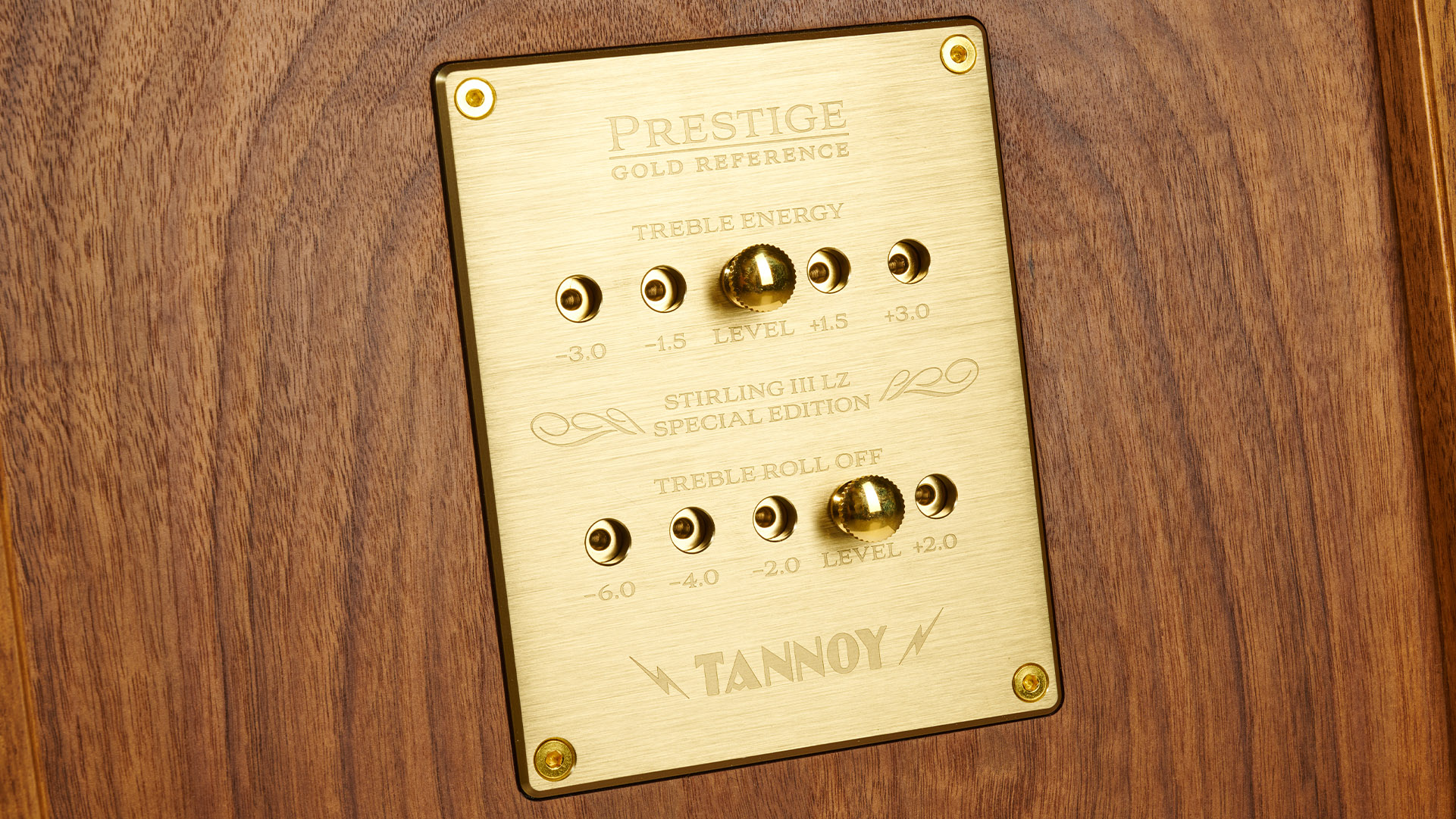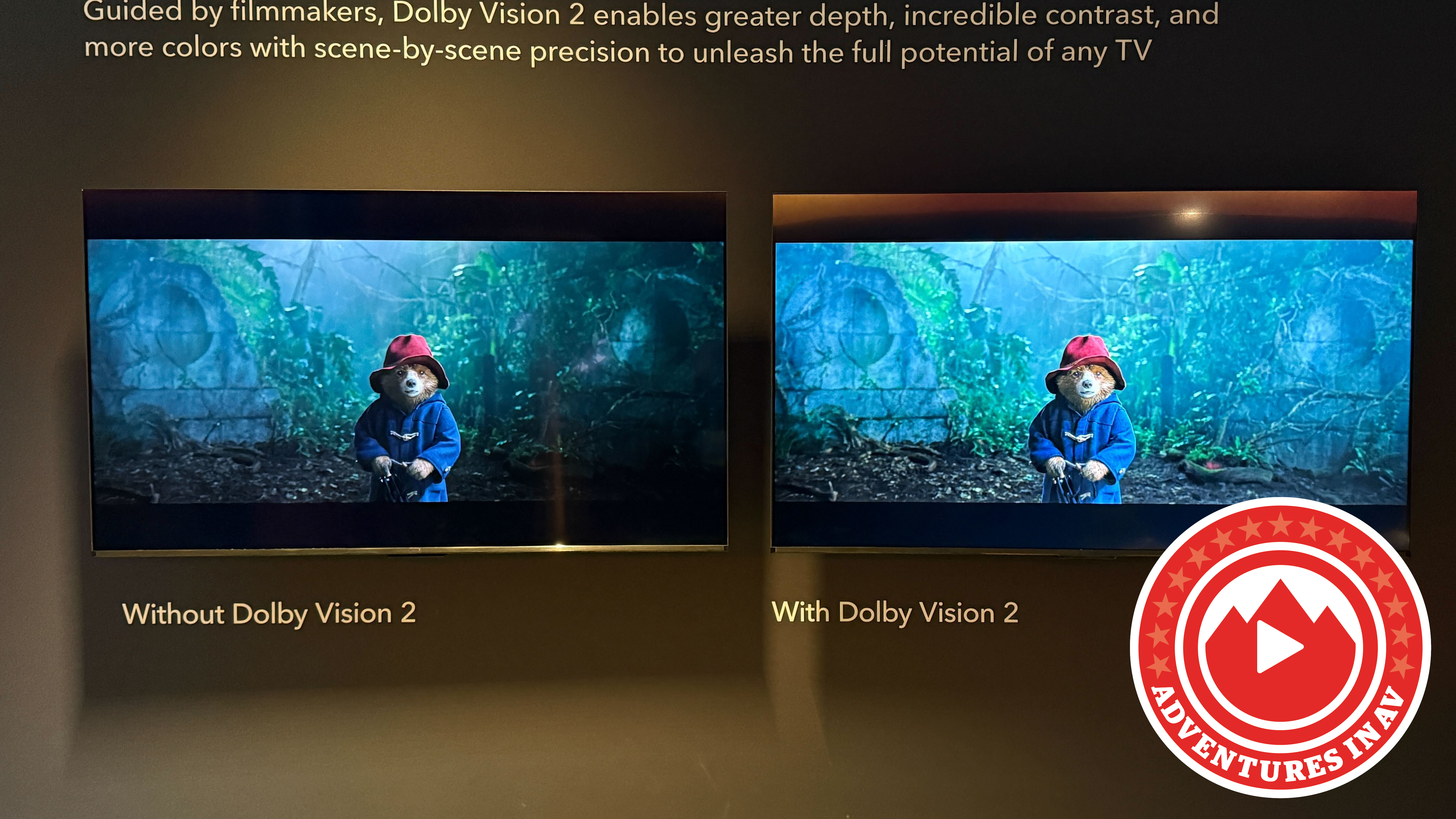What Hi-Fi? Verdict
Tannoy’s Stirling III LZ Special Edition speakers promise much but fail to deliver
Pros
- +
Direct and punchy delivery
- +
Impressive integration and even dispersion
- +
Neat cabinet construction
Cons
- -
Congested and compressed sonic presentation
- -
Lows lack definition and texture
- -
Could sound more refined and balanced
Why you can trust What Hi-Fi?
Over the years Tannoy has become well known for its Prestige range of high-end speakers and rightly so. These speakers invariably couple one of the company’s more exotic Dual Concentric driver arrays (where the tweeter sits in the throat of the mid/bass unit) with a traditional-looking, usually large box and the result is almost always excellent. You have to be sympathetic to their olde-worlde appearance, of course, but even if you don’t like the look, it has always been easy to appreciate their sound.
When the news broke about the release of the new Tannoy Stirling III LZ Special Edition, we couldn’t wait to have a listen. All the ingredients seemed in place for this to be a terrific product.
Build & design

The speaker’s unfashionable wider-than-deep 85.5cm tall cabinet allows the fitment of a large (25cm) Dual Concentric driver array, and that combination gives so many on-paper advantages compared to more conventionally designed, less bulky alternatives.
Those advantages include high sensitivity (93dB/W/m), strong low-end extension (Tannoy claims 29Hz within -6dB limits) and a very reassuring 500-watt peak power handling (125 watts continuous). Such a large driver in a relatively generously sized cabinet also promises strong dynamics and a sense of ease while delivering them that slimmer rivals equipped with smaller drivers, even using multiple units, never quite seem able to match.
That high claimed sensitivity has benefits too. It allows the use of some of the hugely talented but low-power amplifier designs on the market. These, often valve-based units, can have outputs that barely register above single-figures, but with a speaker as sensitive as this Tannoy they can still produce decent volume levels in most small to medium rooms.

Type Floorstanders
Drive units Dual concentric array (52mm aluminium/magnesium dome tweeter and 25cm paper pulp mid/bass)
Ported? Yes ( front)
Bi-wire? Yes
Impedance 8 ohms (minimum 5 ohms)
Sensitivity 93dB
Dimensions (hwd) 85.5 x 39.7 x 36.8cm
Weight 33.2kg
Finishes x1 (oiled walnut)
The III LZ in the Stirling name is a reference to the much-loved ‘Monitor Red’ models from the 1960s. But apart from both using a 25cm dual concentric driver array and general configuration, there is little else in common. The driver array used in the Stirling is, of course, a far more modern interpretation of the Dual Concentric idea but the advantages of the concept against more conventional driver layouts remain unchanged. Such an arrangement, where the tweeter sits in the throat of the mid/bass unit, offers more consistent dispersion in all directions as well as the potential for improved integration and phase behaviour between the drivers.
The Dual Concentric used here features a ‘pepper pot’ waveguide for the 52mm aluminium/magnesium alloy dome tweeter which crosses over to the impressive-looking 25cm paper pulp mid/bass unit at a relatively low 1.1kHz. The Stirling’s low-end is tuned by a pair of ports that exit from each side of the front baffle around halfway up the cabinet. This port positioning should make the Stirlings less fussy about their exact proximity to a rear wall.
The latest hi-fi, home cinema and tech news, reviews, buying advice and deals, direct to your inbox.

Look around the back of the speakers and you will notice a fifth binding post. Four of these are for bi-wiring, while the fifth should be connected to your amplifier’s chassis for grounding purposes. In our experience, this makes a subtle improvement in terms of clarity so is worth investigating, though we wouldn’t consider it essential.
If you appreciate fine carpentry then these speakers are a treat. They are a little ornate for our tastes but some of the cabinet detailing and metalwork is lovely. Though the Stirling’s braced cabinet construction isn’t particularly elaborate by the price standards, there is no denying the pleasing fit and finish, and the luxurious appearance of the oiled walnut veneer. Note that walnut is the only finish option.
Compatibility

On a practical note, as these Tannoys weigh in at just over 33kg each we recommend you get a friend’s help to unpack them or, even better, get the dealer to do it (and set them up). They’re not unusually fussy about positioning. In our 3 x 7 x 5m (hwd) test room, the Stirlings sound relatively balanced at anything more than 30cm away from the wall behind them. We angle them in slightly towards the listening position to firm up the stereo imaging and need to tilt them back a little (using the floor spikes) to get the tweeter firing more towards our ear height at the listening position. This is something to note if your sofa or chair leaves your ear height well above the Stirling’s tweeter.
Any speaker at this level positively demands a top-class partnering system and these Tannoys are no different. Our sources are the Naim ND555/555 PS DR music streamer and the Technics SL-1000R/Kiseki Purpleheart MC record player, and they feed our usual Burmester 088/911 MkIII amplifier combination. We also have Naim’s Supernait 3 integrated amp to see how the Tannoys cope with more modest but still capable amplification. While very different in engineering approach, our reference ATC SCM50 offers a useful benchmark, showing what is possible at this kind of high-end price point.
Sound

We have to put our cards on the table here. Over the years we have heard many of Tannoy’s Prestige high-end speakers and loved them. It’s not so much the styling we like, but more the combination of generously proportioned cabinets and drive units working together to produce vividly dynamic yet still subtle results that while not the most tonally neutral or refined, seem to get right to the heart of the music. In our view, the Stirling III LZ Special Edition fall short of doing that.
They start off a little shouty and hard-edged but once given a few days to settle these traits fade, but don’t disappear. Partnering them with sweet-sounding amplification like Leben’s CS600X would help matters, but it’s also fair to say that our reference Burmester pre/power is hardly short of refinement.
Once we start listening, it becomes clear that these Tannoys are something of a mixed bag sonically. They have undoubted strengths in delivering the likes of Stravinsky’s The Rite Of Spring with impressive speed and punch. The leading edges of notes are defined with an unusual crispness and there is a pleasing sense of clarity about the presentation. These are direct, hard-hitting performers and can track low-level instrumental strands with ease, even when the music becomes demanding. They’re capable of a good sense of scale and, coupled with decent reach at the low end, that means an authoritative and muscular presentation.
Stereo imaging is another strength. The even dispersion characteristics of a Dual Concentric design usually mean a focused and stable soundstage, and so it proves here. The listening sweet spot is broader than most and the speakers remain consistent in character even when we move around our test room.

But unfortunately, it’s not all good news. There’s a lack of subtlety to the presentation that is surprising. While they have undoubted strengths, the Stirlings don’t quite exhibit the level of finesse, refinement and articulation that we would expect from a top-class speaker at this level. This comes through in the muted dynamic expression in Nina Simone’s My Baby Just Cares For Me as much as it does in the lack of emotion we feel in Yoyo Ma’s cello when listening to our old favourite, the Crouching Tiger, Hidden Dragon OST. It is a congested presentation that can’t render the space between instruments well and struggles to communicate the shifts from quiet to loud with the skill we would expect from speakers at this price point.
Tonally, these Tannoys sound lean and short of natural warmth through the midrange, leaving voices and instruments sounding thinner and harder than they should, which also contributes to a cluttered feel to the sound. We play around with the front panel settings for tweeter energy and roll-off but none of it helps as the issues have to do with quality rather than level.
Bass performance is also flawed. Tannoy’s engineers have worked hard on the porting arrangement in the cabinet, but the results aren’t great. The Stirling can dig relatively deeply, but compared to the ATC SCM50 speakers when playing bass fests like Hans Zimmer’s Interstellar OST or Massive Attack’s Heligoland set, there is a notable shortfall of grip and definition. A better grasp of rhythmic drive and greater timing precision in general would be nice too.
Verdict

In short, we’re disappointed. We have traditionally loved Tannoy’s higher-end efforts but while the Stirling III LZ Special Edition certainly mirror the appearance of those past greats, despite some good qualities they fall short of delivering the kind of sonic sophistication and substance expected at this elevated price level.
SCORES
- Sound 3
- Build 4
- Compatibility 4
MORE:
Read our review of the ATC SCM50
Also consider the Audiovector R3 Arreté
Best floorstanding speakers: budget to premium
What Hi-Fi?, founded in 1976, is the world's leading independent guide to buying and owning hi-fi and home entertainment products. Our comprehensive tests help you buy the very best for your money, with our advice sections giving you step-by-step information on how to get even more from your music and movies. Everything is tested by our dedicated team of in-house reviewers in our custom-built test rooms in London, Reading and Bath. Our coveted five-star rating and Awards are recognised all over the world as the ultimate seal of approval, so you can buy with absolute confidence.


